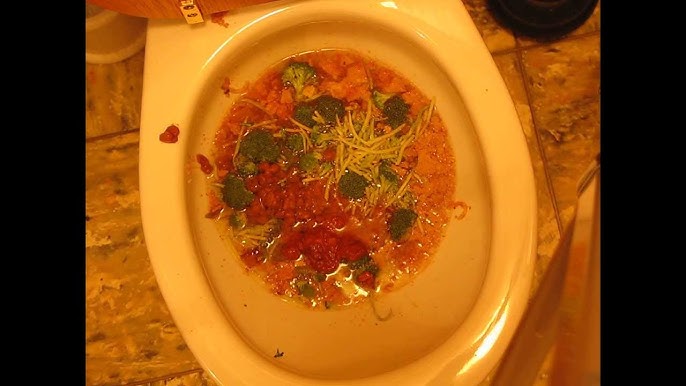Are You Allowed to Flush Food in the Toilet?
Are You Allowed to Flush Food in the Toilet?
Blog Article
How do you really feel with regards to Think Twice Before Flushing Food Down Your Toilet?

Intro
Many people are usually faced with the predicament of what to do with food waste, specifically when it concerns leftovers or scraps. One usual question that occurs is whether it's okay to flush food down the toilet. In this short article, we'll look into the reasons why people might think about purging food, the consequences of doing so, and alternative methods for appropriate disposal.
Reasons individuals might take into consideration flushing food
Lack of awareness
Some individuals may not be aware of the potential damage brought on by purging food down the commode. They might wrongly believe that it's a harmless technique.
Benefit
Purging food down the commode may look like a fast and simple option to dealing with unwanted scraps, especially when there's no nearby trash bin readily available.
Negligence
Sometimes, individuals may simply pick to flush food out of sheer laziness, without taking into consideration the repercussions of their actions.
Consequences of flushing food down the commode
Ecological effect
Food waste that winds up in rivers can contribute to air pollution and harm marine ecological communities. Furthermore, the water made use of to flush food can strain water resources.
Pipes issues
Flushing food can cause clogged up pipes and drains, causing pricey pipes repairs and troubles.
Kinds of food that need to not be purged
Fibrous foods
Foods with fibrous textures such as celery or corn husks can get entangled in pipelines and cause obstructions.
Starchy foods
Starchy foods like pasta and rice can take in water and swell, bring about obstructions in pipelines.
Oils and fats
Greasy foods like bacon or food preparation oils should never ever be purged down the toilet as they can solidify and trigger blockages.
Correct disposal methods for food waste
Utilizing a waste disposal unit
For homes geared up with garbage disposals, food scraps can be ground up and purged via the pipes system. Nonetheless, not all foods are suitable for disposal in this way.
Recycling
Particular food product packaging products can be reused, lowering waste and reducing environmental impact.
Composting
Composting is an environmentally friendly means to deal with food waste. Organic materials can be composted and utilized to improve dirt for gardening.
The importance of appropriate waste management
Lowering environmental damage
Appropriate waste monitoring practices, such as composting and recycling, aid lessen contamination and protect natural resources for future generations.
Securing pipes systems
By avoiding the method of flushing food down the bathroom, house owners can prevent expensive plumbing repairs and keep the stability of their plumbing systems.
Verdict
To conclude, while it may be appealing to purge food down the commode for convenience, it is necessary to understand the potential consequences of this activity. By embracing correct waste monitoring methods and dealing with food waste properly, people can add to healthier pipes systems and a cleaner environment for all.
FLUSH FOOD DOWN THE TOILET?
FLUSHING FOOD CAN CAUSE BLOCKED DRAINS IN YOUR HOME
All of the plumbing fixtures in your home are connected to the same sewer pipe outside of your home. This outdoor sewer pipe is responsible for transporting all the wastewater from your home to the Council sewer mains. Even small pieces of food that go down the kitchen sink can cause problems for your sewer. It should therefore be obvious that flushing larger bits of food, such as meat, risks a clog in either the toilet itself or the sewer pipes. Flushing greasy food is even more problematic because oil coagulates when it cools, coating the interior lining of your pipes.
THE TOILET IS NOT A BIN
Food isn’t the only thing that people shouldn’t be flushing down the toilet. People use the toilet to dispose of all kinds of things such as tampons, makeup wipes, dental floss, kitty litter and even underwear. Water goes to great lengths to educate residents about the high costs and stress placed on wastewater treatment systems simply from people flushing the wrong stuff down the toilet. It costs taxpayers millions of dollars each year, and homeowners thousands in blocked drain repairs.
FLUSHING FOOD IS A WASTE OF WATER
Flushing food is a waste of our most precious resource - water. In June this year Level 1 water restrictions were introduced to protect water supply from drought conditions. Much of New South Wales continues to be affected by prolonged drought with recent figures revealing up to 97 per cent of the state remains in drought. Depending on whether you have a single or dual flush toilet, every single flush uses between five and 11 litres of water. In the current climate this is a huge amount of water to be wasting on flushing food that should be placed in the bin (or better yet, the compost).
https://www.jabplumbingsolutions.com.au/blog/can-you-flush-food-down-the-toilet

As an avid reader about What Can Happen If You Flush Food Down the Toilet?, I thought sharing that article post was important. Feel free to set aside a second to distribute this write-up if you appreciated it. Thanks a bunch for your time. Don't forget to come visit our website back soon.
Explore Report this page